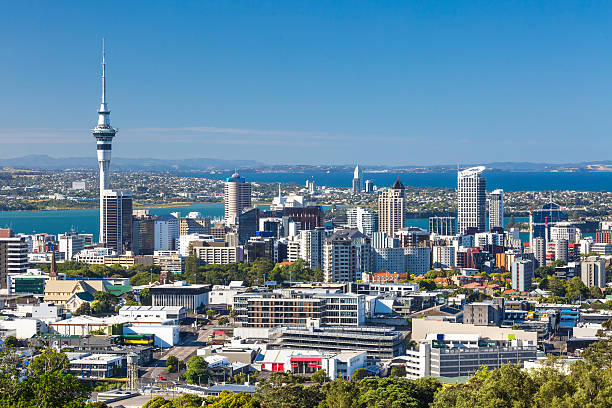Dominica Travel Guide: All you need to know to visit Dominica in 2024
Welcome to Dominica
Dominica is one of the minor fertile islands in the eastern Caribbean Sea. It is bordered by the French island of Guadeloupe and Marie Galante to the north, and Martinique, to the south. It was later colonized by Europeans, predominantly by the French, from the 1690s to 1763. By 1800 people of African ancestry were the majority of the island’s residents, where they toiled on coffee plantations and the majority of the inhabitants of Roseau.
Geography
Dominica covers approximately 750 square kilometers and a total coastline of 148 kilometers and thus making it the 20th smallest country in America and 192nd in the world. Geographically, the landmass of Dominica is of volcanic origin, and its topography is the most mountainous in the Commonwealth Caribbean. The island has lush forests and an abundance of rivers. Dominica is divided into ten regions or parishes. The highest peak in Dominica is Morne Diablotins, which is at 4,744 feet and is also the second-highest mountain in the Lesser Antilles. The region also has several lakes and rivers, such as Boiling, Boeri, and Kachibona.
Climate
Dominica’s climate is tropical maritime, with dominant influences being the Atlantic, Caribbean, and northeasterly trade winds. As a result of its mountainous terrain, the island possesses several microclimates. The island is characterized by consistently warm year-round temperatures, with a daytime average of 26 degrees Celsius in coastal areas decreasing to 19 to 21 degrees Celsius in mountainous regions. In comparison, night temperatures vary from 18 to 22 on the coast and 10 to 12 degrees Celsius at higher elevations. The average annual temperature is 27 degrees Celsius. The dry season is from February to April, and the heaviest rains fall during the late summer, August to December. The average yearly rainfall ranges from 1900milimeters along the coast to 5000milimeters inland. The island is also apt to natural disasters such as earthquakes, volcanic eruptions, floods, landslides, and hurricanes.
Population
The current population of Dominica stands at 73,040. Dominica is one of the islands with diverse ethnic groups, races, and languages. The largest population is the Africans at 75%, followed by multiracial communities at 19%, Kalinga at 4%, European or other bats at 0.8%and lastly unspecified at 0.2%. Most of the population in Dominica are youth between the age of 15 to 64 years, with few people living beyond 64 years. Its infant mortality rate is also relatively constant at 32 deaths at 1000 live births.
Languages
Dominica has various ethnic groups, with various languages spoken in the country. English is the official language and is universally spoken and understood. In addition, there are also other languages, such as Dominican Creole, an Antillean Creole based on French, which is also widely spoken. A majority of the French Creole-speaking population resides on the island.
Religion
Christianity is the most common religion in Dominica, with most practitioners identifying as Roman catholic. Besides this, there are also other various religious groups such as Methodists, Pentecostals, and event-day Adventists. The catholic religious community started around 1215 at Toulouse, governed by the rule of Saint Augustine and statues to govern the friars’ life.
Government
Dominica is a multiparty parliamentary democracy. The prime Minister heads the government, and the House of Assembly elects the president. The constitution of Dominica is set out in Schedule 1 to the Commonwealth of Dominica constitution order of 1978, which is the supreme law providing the separation of powers. Elections are after every five years, and the president is the head of the state appointing the cabinet secretaries. The House of Assembly in Dominica is unicameral, and it is the legislature of Dominica. Its judicial system consists of a high court of justice and a court of appeal. Less severe cases are heard in district magistrate’s courts. The judiciary is independent.
Economy
Dominica has a mixed economic system, including personal freedom, centralized economic planning, and government regulations. The economy mainly relies on agriculture, especially bananas. The financial service industry and passport sales are becoming the most prominent country’s sources of income increasingly. Recent disasters such as Hurricane Dean, tropical storms, and Hurricane Maria have also affected economic productivity to a greater extent.
Culture
The country has a mixed cultural heritage, such as the cultures of Spaniards, colonists, enslaved Africans, and Taino cultural elements. The country also has natural hot springs and tropical rainforests. Morne Trois pitons national park is an adobe to the volcanically heated, steam-covered boiling lake. Dominica also is known for its most outstanding interest in baseball (pelota)
Recent History
Recently on 8th September 2017, Tropical Cyclone Maria landed on Dominica as a category five storm with winds exceeding 227km/h. As a consequence of this incident, more than 70 individuals lost their lives, some still unaccounted for. The country is also known for its disastrous volcanic eruptions, massive landslides, and floods, such as the Torrential rain that led to a flood that caused absolute havoc in the southern parts of Dominica on 4th November 2022.
Related Articles

5 min read
New Zealand Introduces Key Changes to Post Study Work Visa : What You Should Know
According to the government, this change will provide students with greater flexibility in their academic choices while ensuring they remain eligible to work. For many students, studying abroad is a
Read More
5 min read
The Singapore visa processing time for Indian citizens
Singapore is a small island located in the Malay Peninsula in Southeast Asia. It is one of the most economically developed countries in the world. Singapore is a fantastic place
Read More
5 min read
How Much Does an Australia Trip Cost from India?
If you are planning a trip from India to Australia, you must follow some of the points. that are : Planning Budget Traveling date and time To which place you
Read MoreFor Indians to the island of Dominica, individuals of Indian Nationality do not need a visa. Therefore, Indians enjoy free travel to the country.
Citizens from India only need a visa to come to Dominica for a short stay if the reason for the visit is tourism, visit, or business. Indians enjoy free travel to the country.
The stay period is up to 6 months
No, the two are different countries and not related.
Business visas and tourist visas are free of charge for Indian citizens.
Travel checklist to Dominica
- Valid passport
- Visa
- Flight tickets
- Travel Insurance
- Accommodation booking confirmation
- Supporting document
- Travel itinerary
